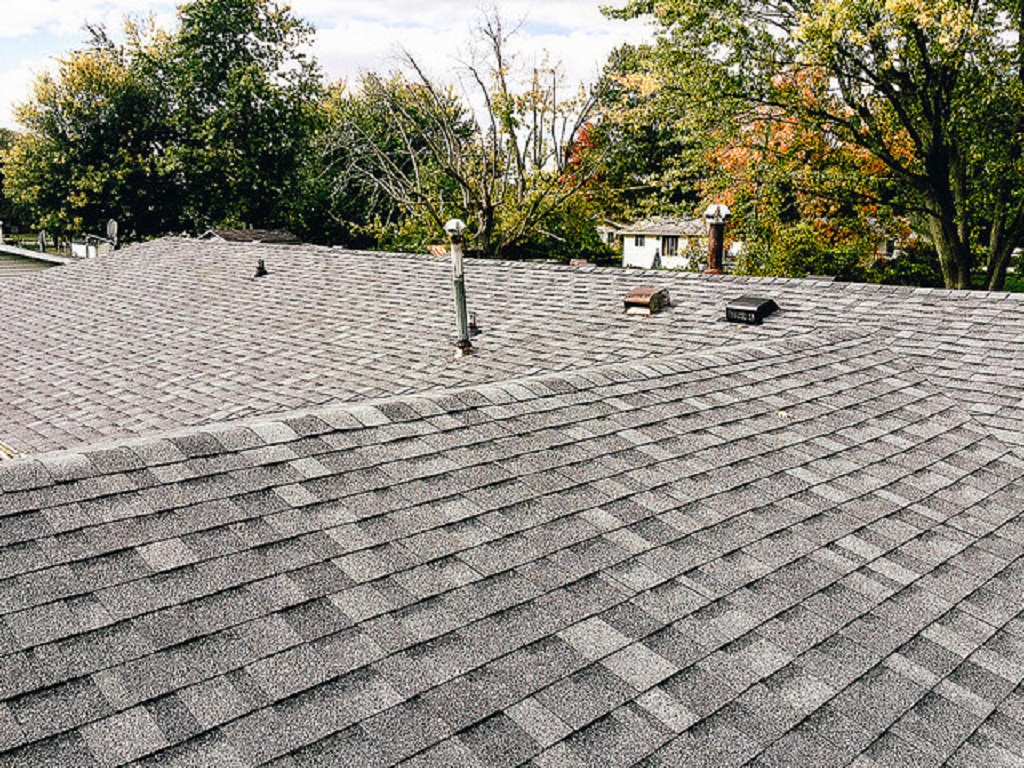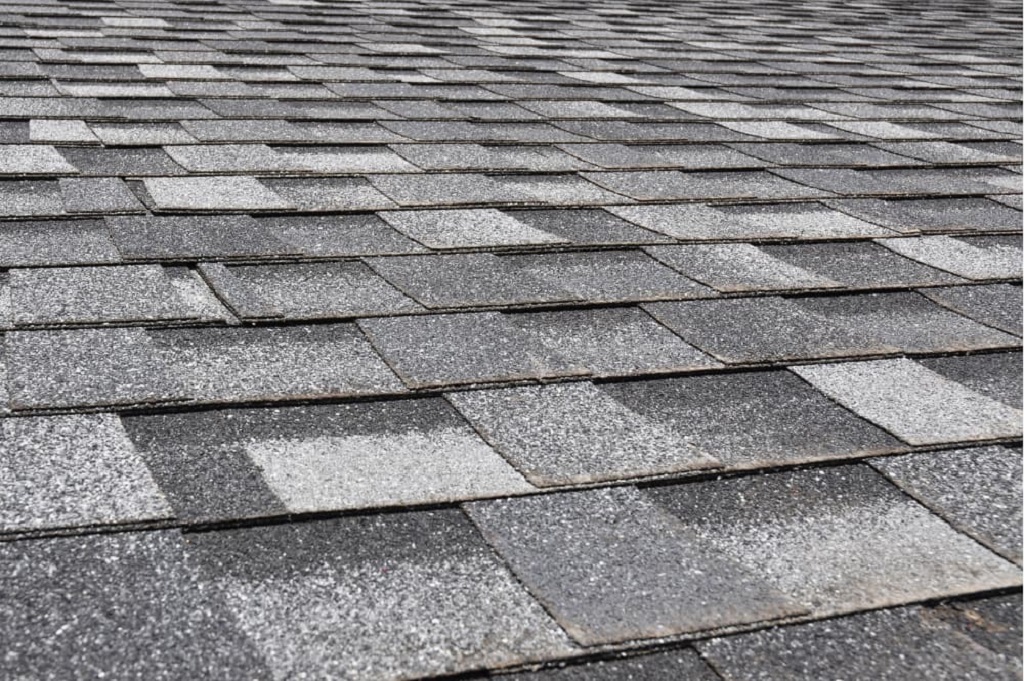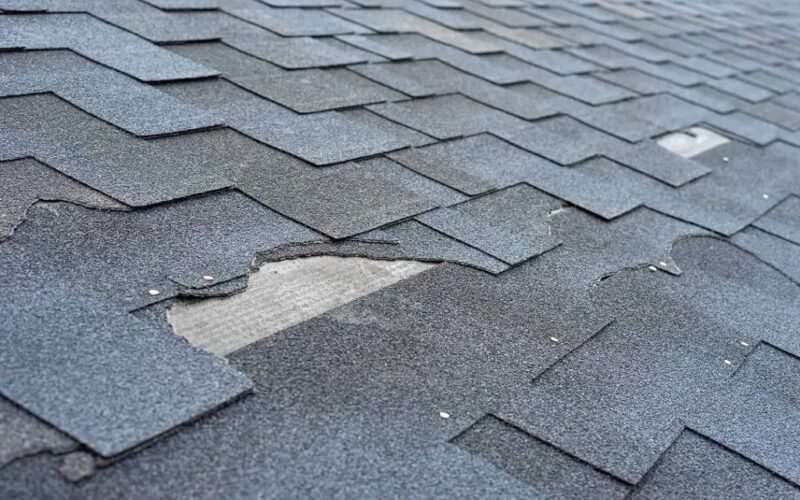Composition shingles, often called asphalt shingles, rule the residential roofing world. They’re famous for a reason – they’re budget-friendly, come in a wide variety of colors and styles, and, with proper care, provide solid protection for your home. But as with anything, they have a lifespan. So, how long do composition shingle roofs last? Let’s dig into composition shingle roof lifespan.
The Typical Lifespan: What to Expect

Generally, most composition shingle roofs have 20 to 30 years of lifespan. That’s a significant amount of time for protecting your home. However, this range is just a ballpark figure, and many factors can make your roof last longer or shorter than expected. Let’s dive into these details.
Factors That Affect Your Roof’s Lifespan
Your roof is much like a prized member of your family who is frequently out in the elements – it takes a beating! Consider these factors to get a better sense of the composition shingle roof lifespan:
- Shingle Type: There are a few main types of composition shingles out there:
- 3-Tab Shingles: These are the most basic and affordable, with around 20-25 years of lifespan.
- Architectural Shingles: Sometimes called dimensional shingles, they offer thicker construction and enhanced durability. They generally last 25-30 years.
- Luxury/Designer Shingles: These premium shingles boast superior durability, some even mimicking the look of tile or slate. They can last upwards of 30 years, perhaps even reaching the 50-year mark.
- Climate and Weather: Your local climate heavily influences your roof’s lifespan. Extreme heat, constant hail, driving rain, snow, and high winds can cause accelerated wear and tear. Roofs in milder climates often fare better.
- Installation Quality: A superb installation can set your roof up for a successful life. Shoddy artistry and incorrect techniques, however, can cut its life short. Always work with trusted, experienced roofing professionals.
- Roof Maintenance: Like your car needs regular oil changes, your roof needs attention, too! Annual inspections, cleaning debris, fixing minor issues promptly, and proper attic ventilation ensure a long, healthy roof life.
- Material Quality: Not all shingles are equal. Investing in higher-quality shingles can yield years of additional protection.
Signs Your Roof Might Need Replacement
Don’t wait until your ceiling drips to consider a roof replacement. Keep an eye out for these subtle (and not-so-subtle) clues:
- Age: If your roof is reaching (or has surpassed) the end of its expected lifespan, it’s time for a severe checkup. Even without leaks, an older roof can be vulnerable to sudden failures.
- Curling or Buckling Shingles: Warped shingles mean damaged granules and reduced waterproofing, allowing moisture intrusion and further damage.
- Missing Shingles: Strong winds or old age can leave you missing ‘teeth’ in your roof’s defense. A few missing shingles are fixable. Widespread loss often calls for replacement.
- Lots of Granules in Your Gutters: Shingles shed granules naturally as they age, but an overload in your gutters is a major red flag. These granules protect your shingles from UV rays, and their loss speeds up roof degradation.
- Sunlight in Your Attic: Poke your head up there during the day. Any sunlight poking through is a sign of deteriorated shingles or damaged underlayment.
- Roof Valleys: Valleys where two roof sections meet often deteriorate first. Keep a watchful eye out for shingle damage or wear in these critical areas.
Taking Care of Your Composition Shingle Roof
While you can’t reverse time or control the weather, you can influence your roof’s lifespan through thoughtful care:
- Regular Inspections: Ideally, have a professional inspection twice yearly (especially after significant storms). You can also do some general checks yourself from the ground level. Early problem detection prevents more significant issues down the road.
- Clean Gutters: Clogged gutters lead to water backup, which can seep under your shingles, causing damage. Clean your gutters regularly, especially during seasons with heavy leaf fall.
- Trim Overhanging Branches: Tree branches rubbing against your roof cause significant wear to the shingles, and falling limbs can result in direct damage. Trim back any branches that could pose a threat.
- Keep It Moss-Free: Moss buildup traps moisture against your roof. You can use unique treatments or consult a professional if moss becomes problematic.
- Don’t Pressure Wash: High-pressure cleaning blasts away those crucial granules, shortening your roof’s life. If necessary, gentle cleaning solutions and light brushing are safer for your shingles.
- Proper Attic Ventilation: A well-ventilated attic regulates temperature and moisture, preventing damage caused by trapped heat and condensation. Consult a professional to assess your attic ventilation needs.
When to Repair vs. Replace
Sometimes, isolated problems (like damage from a fallen branch) are fixable with targeted repairs. However, more extensive issues usually point to replacement:
- Widespread Leaks: Multiple leaks and interior water damage suggest your roof structure might be compromised. It’s usually more cost-effective to replace the whole roof in these cases.
- Roof Sagging: A sagging roof indicates damage to the underlying roof deck or supports, a major structural problem requiring major renovation, including a new roof.
- Significant Granule Loss: If most of your roof has exposed asphalt due to severe granule loss, you’ve lost that critical UV protection, making widespread deterioration inevitable.
The Cost of a New Composition Shingle Roof

The roof replacement price varies depending on factors like your roof size, the type of shingles selected, and local labor costs. Generally, however, be prepared to pay anywhere from several thousand dollars to twenty thousand or more for a new asphalt shingle roof. While an investment, consider it vital protection for your most valuable asset – your home.
Making Smart Roofing Decisions
When the time comes to replace your roof, do your homework:
- Get Multiple Quotes: Don’t jump at the first estimate. Compare prices from at least three reputable roofing contractors.
- Check Licensing and Insurance: Ensure any contractor you consider is fully licensed and insured to protect yourself.
- Understand Warranties: Compare shingle warranties carefully. They cover things like manufacturing defects and sometimes aspects of labor costs if a shingle fails early.
- Think Long-Term: While tempting to grab the cheapest option, remember investing in high-quality materials and excellent artistry can pay off with more years of worry-free protection.
FAQs
Can a new roof be installed over my existing one?
Depending on local building codes and the health of your existing roof, you might be able to do a “layover” where new shingles are added over the old ones. However, a second layer adds weight and obscures pre-existing problems. Compete complete tear-off and a new roof are better long-term investments for many homeowners.
Should I DIY my roof replacement?
Unless you have profound roofing experience, this is generally a bad idea. Roofing mistakes can be costly and jeopardize the safety of your home. For the best results, trust the professionals.
Should I match my existing shingle color when replacing it?
Not necessarily! Your roof replacement is an excellent opportunity to update your home’s look. Explore colors that suit your home’s style and reflect your taste.
How do I find a good roofing contractor?
Start by getting recommendations from friends, family, neighbors, or realtors. Online searches (coupled with verifying licensure and good reviews) yield even more leads. Don’t forget reputable manufacturer websites also often include lists of local certified installers.
Is a high wind-rated shingle truly necessary?
Consider one, especially in areas prone to severe weather. Wind-rated shingles have enhanced bonding, making them less likely to get ripped off under heavy winds.
Conclusion
Your composition shingle roof is a valuable investment, and knowing how to care for it wisely pays off in the long run. Unveiling the Benefits of Roofing Coatings, while their lifespans can vary, regular maintenance, prompt repairs, and understanding when a replacement is due will ensure your home stays protected. comfortable, and resilient against the elements for decades.

